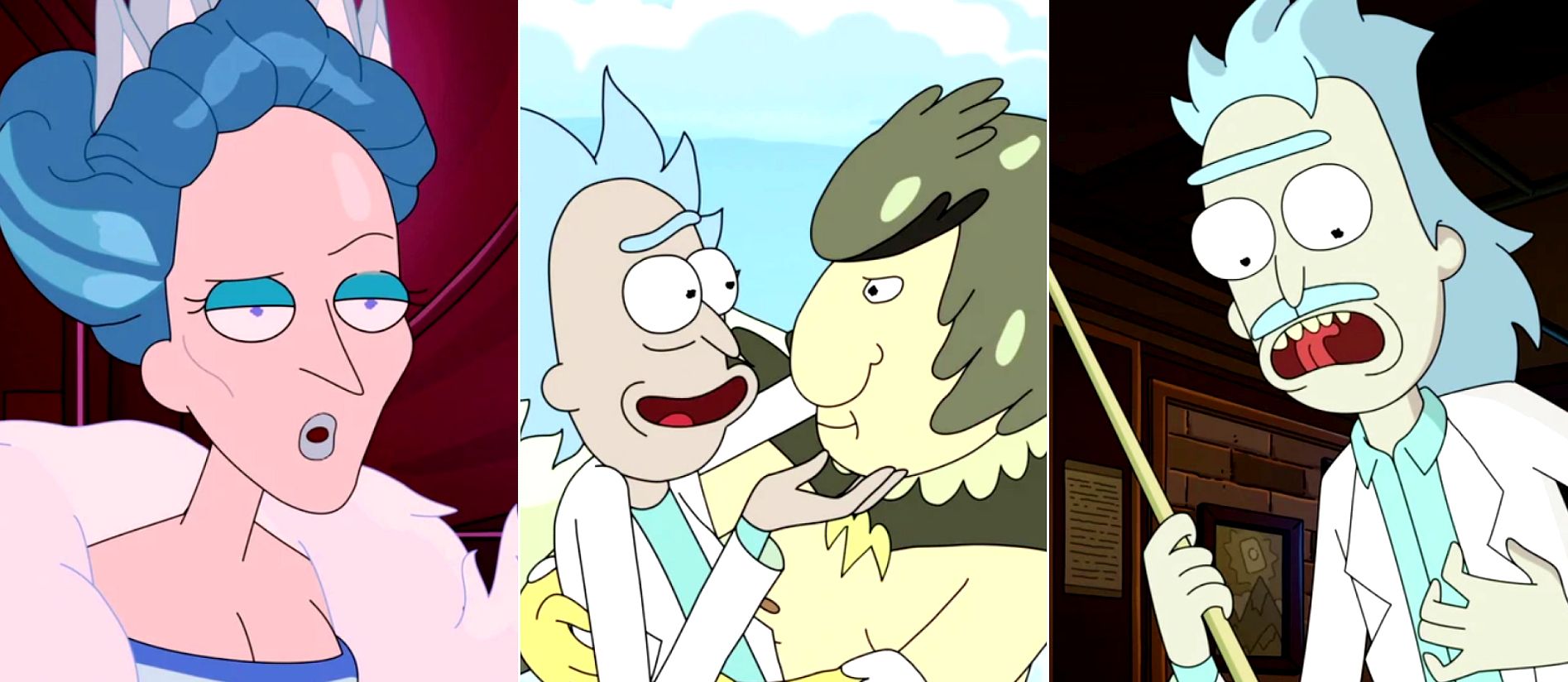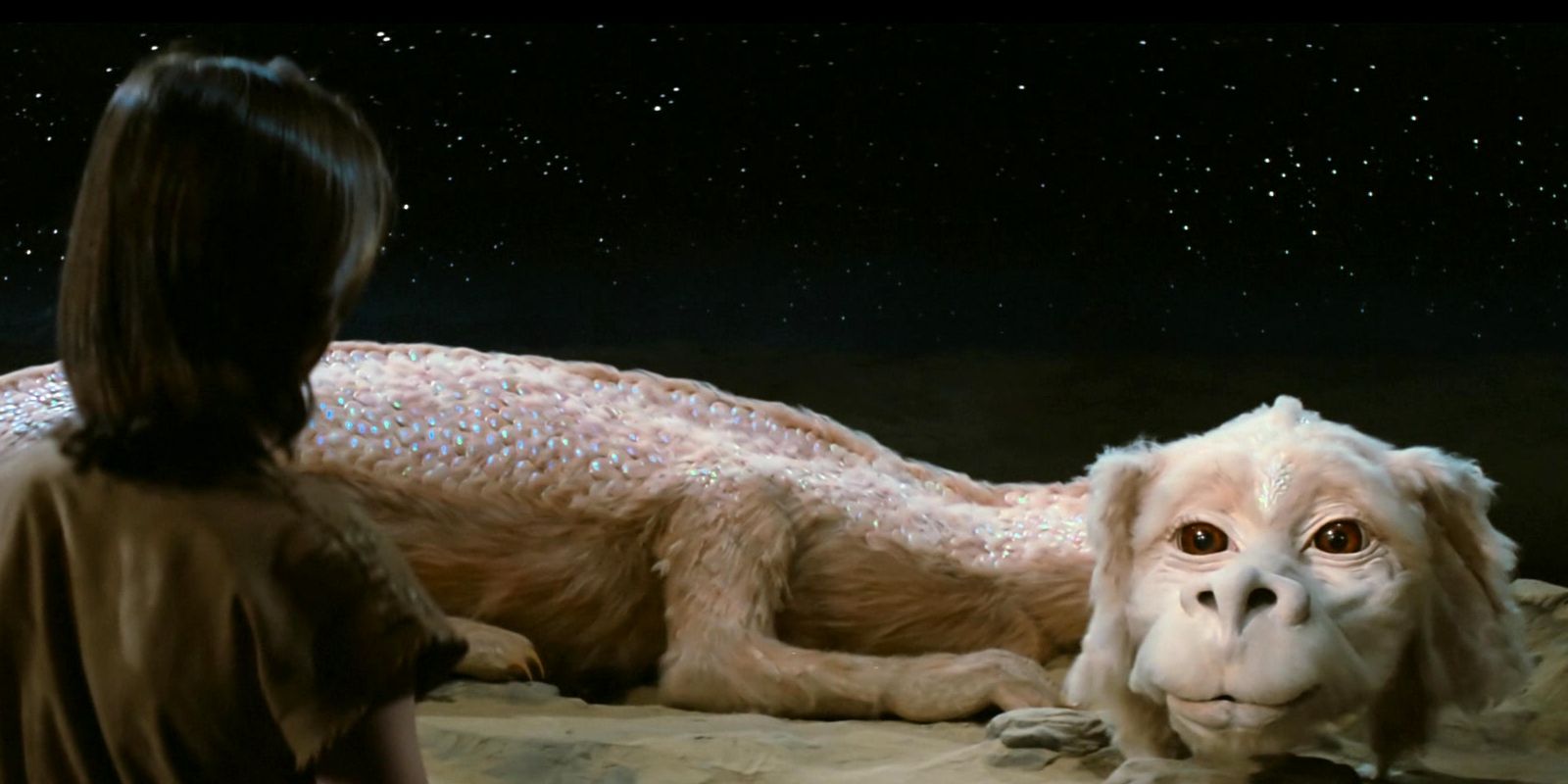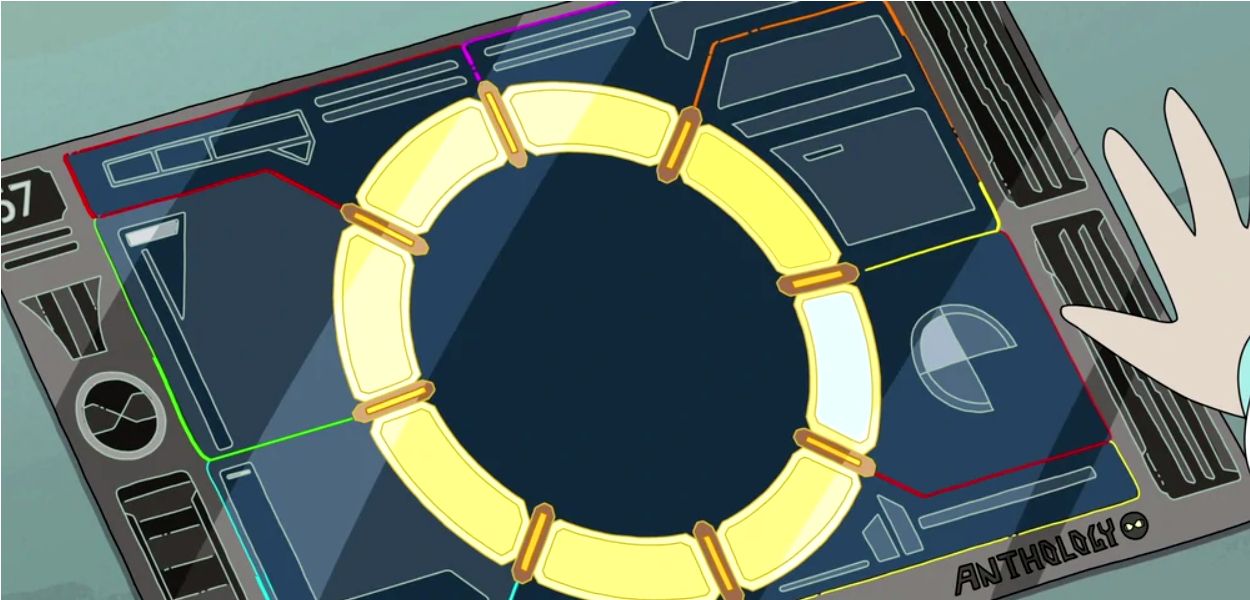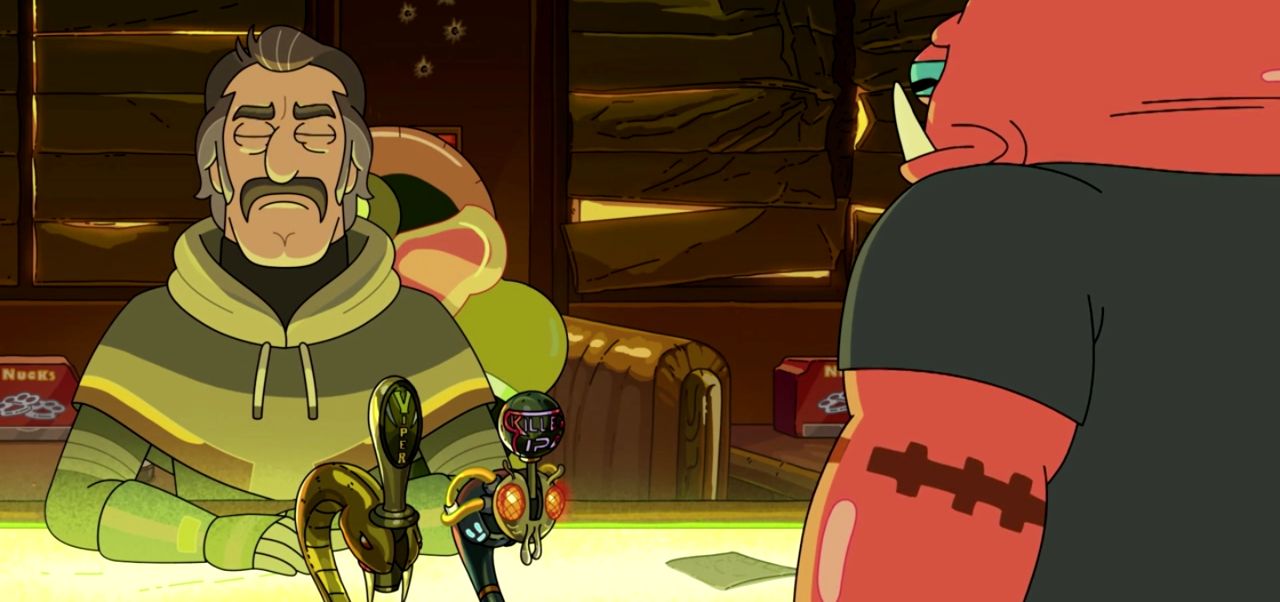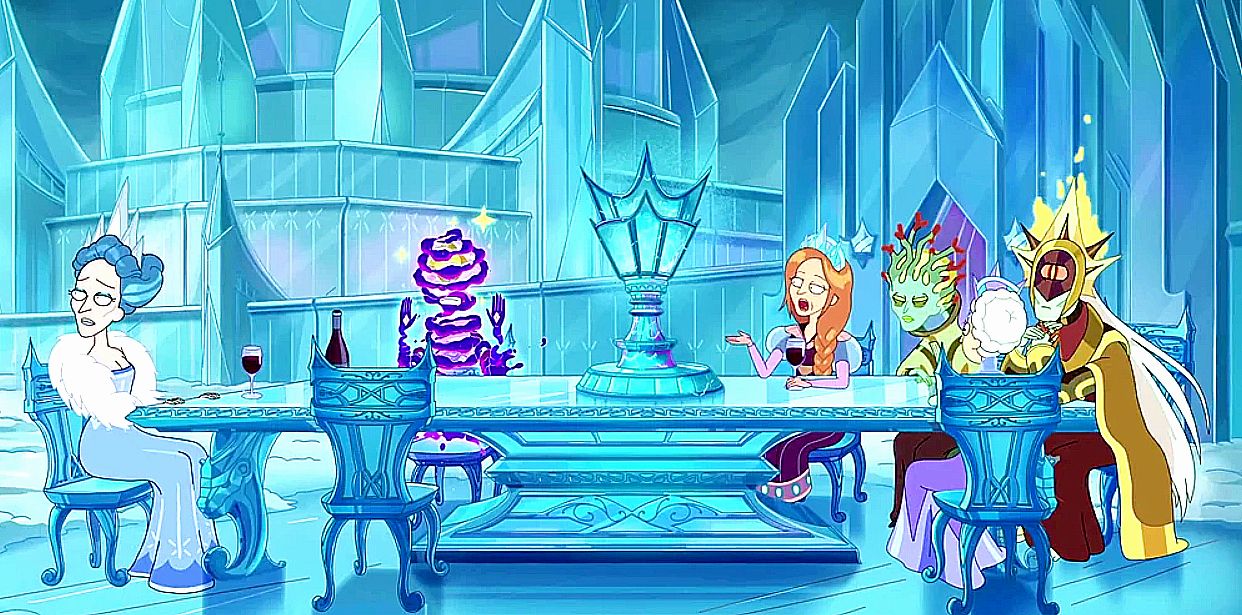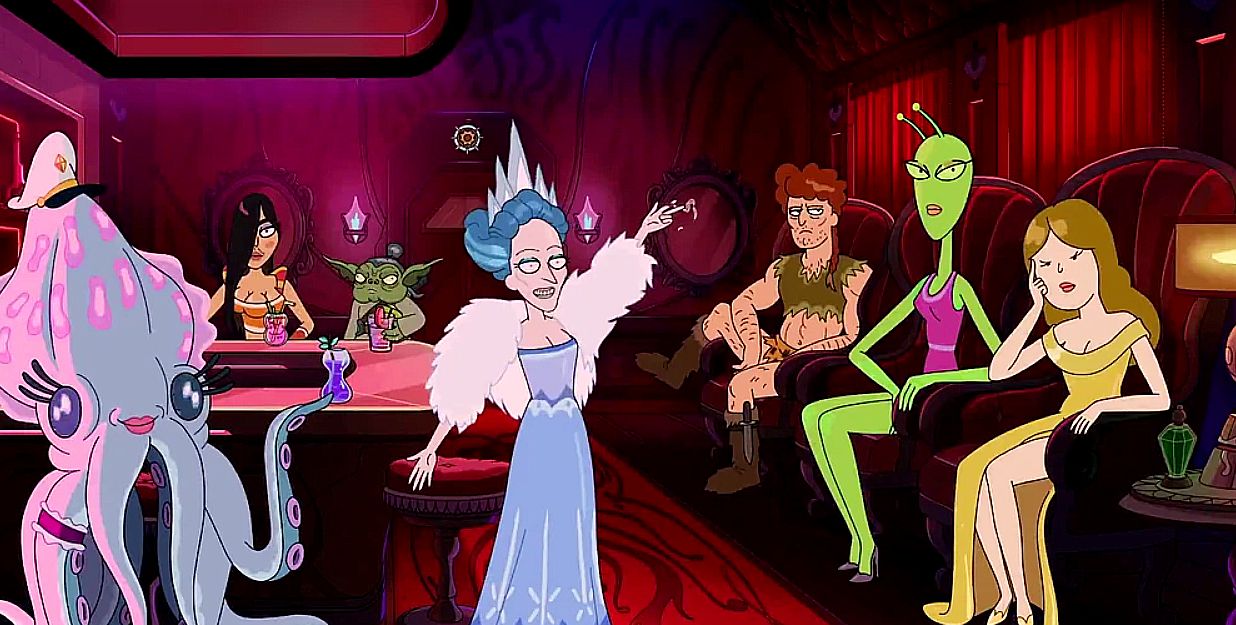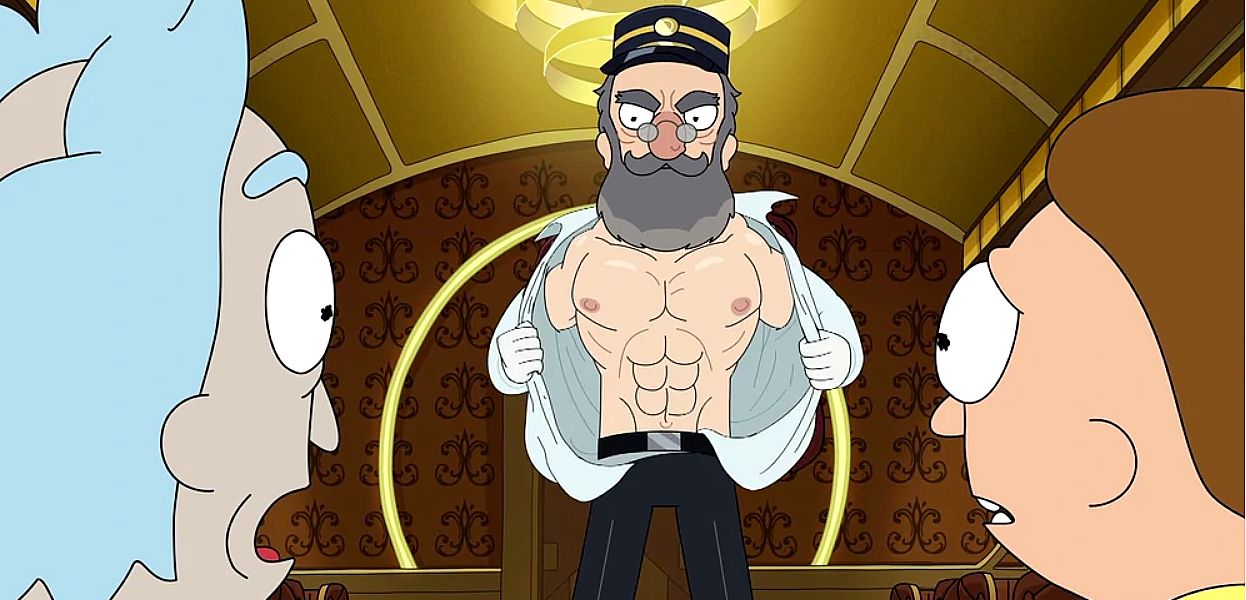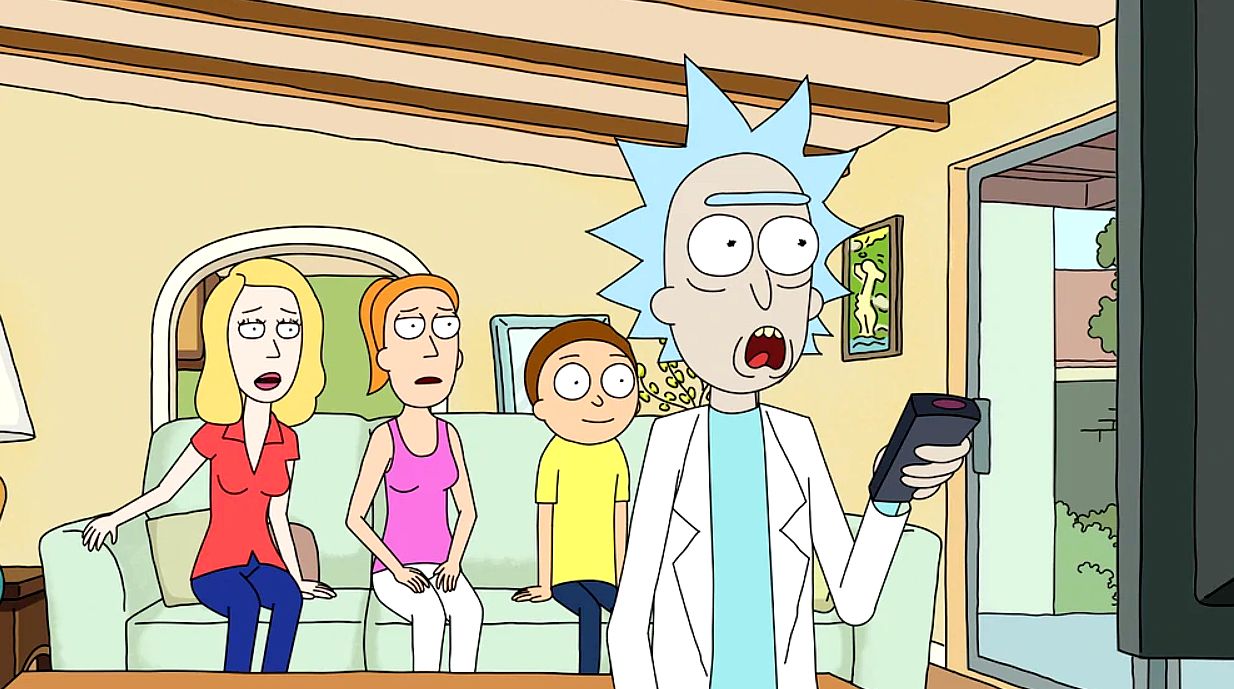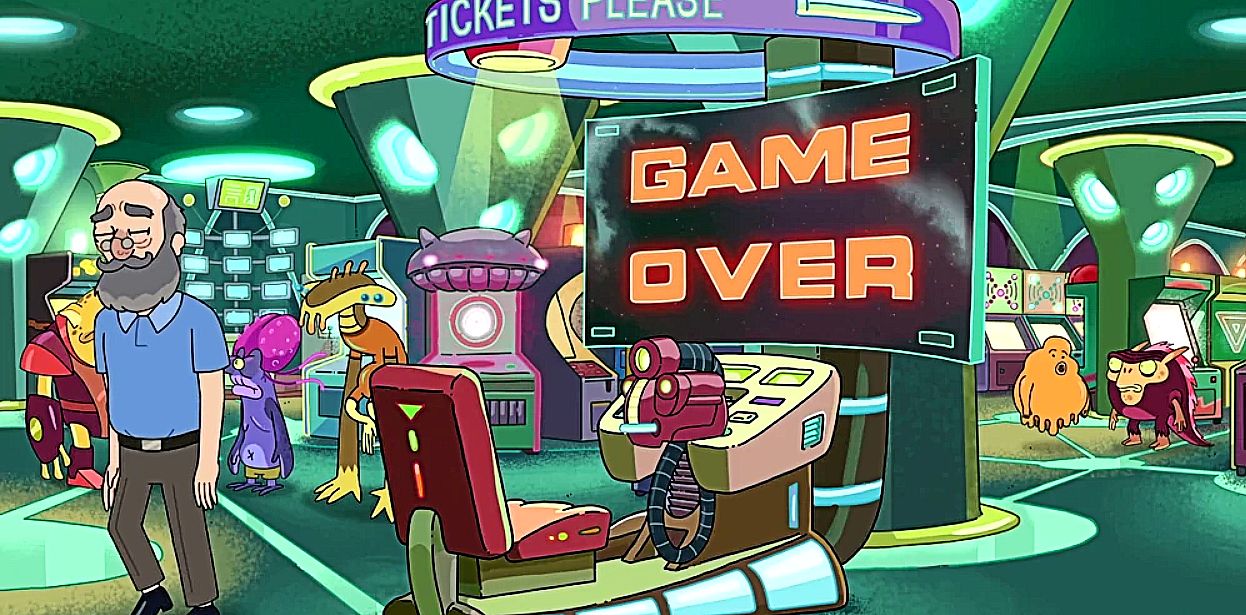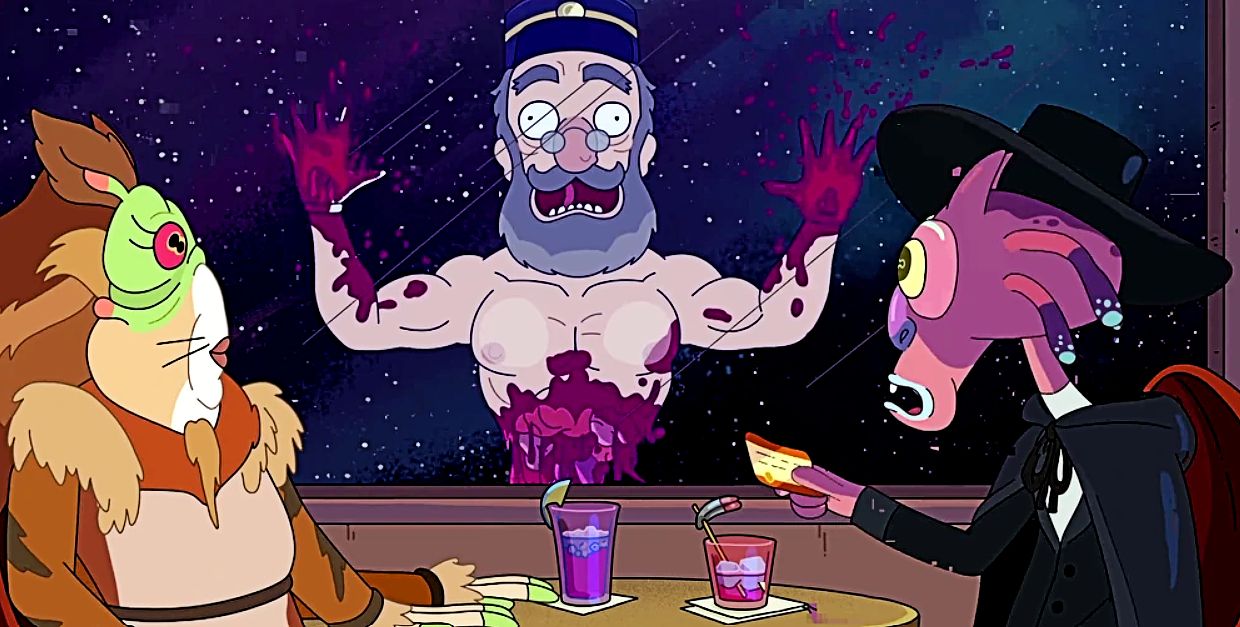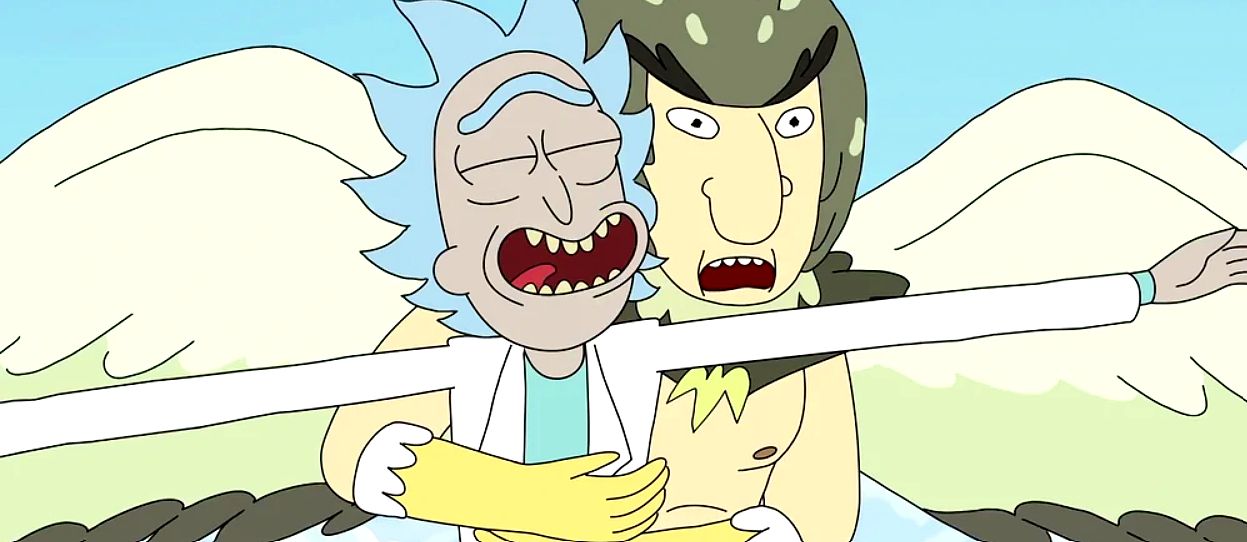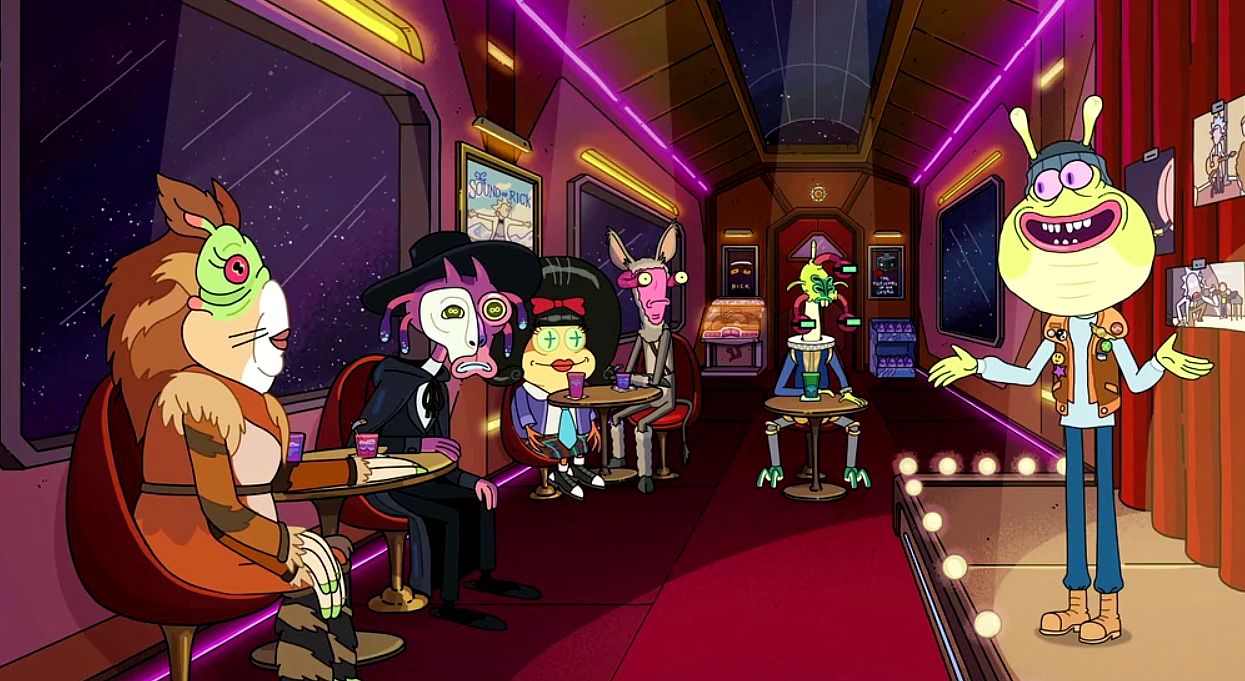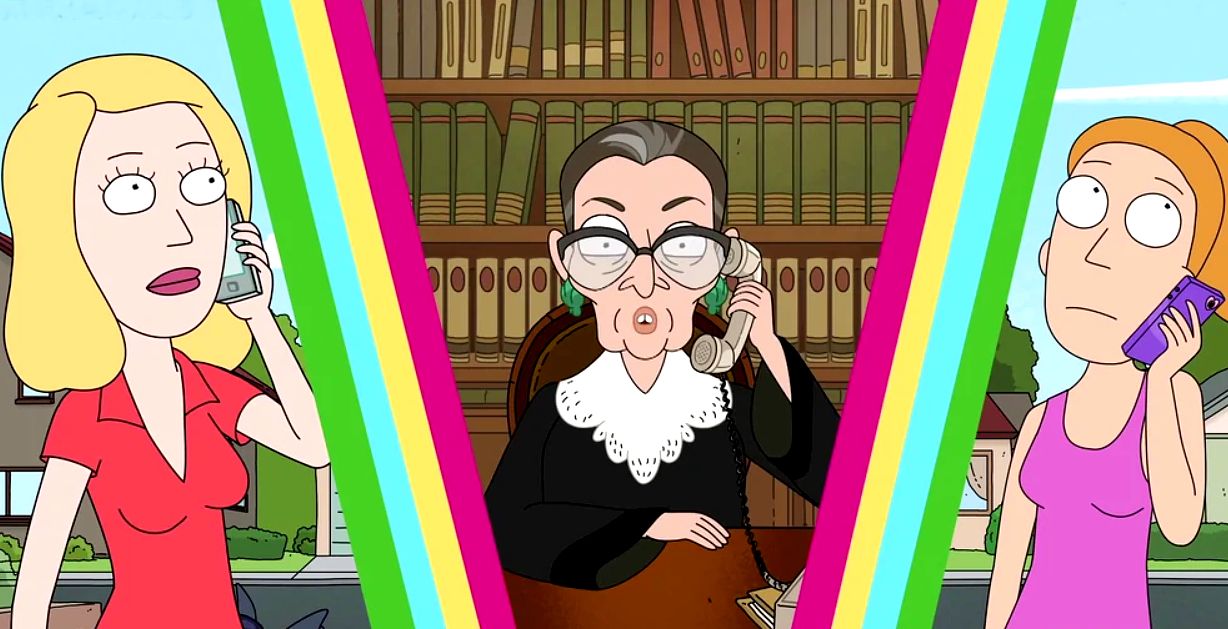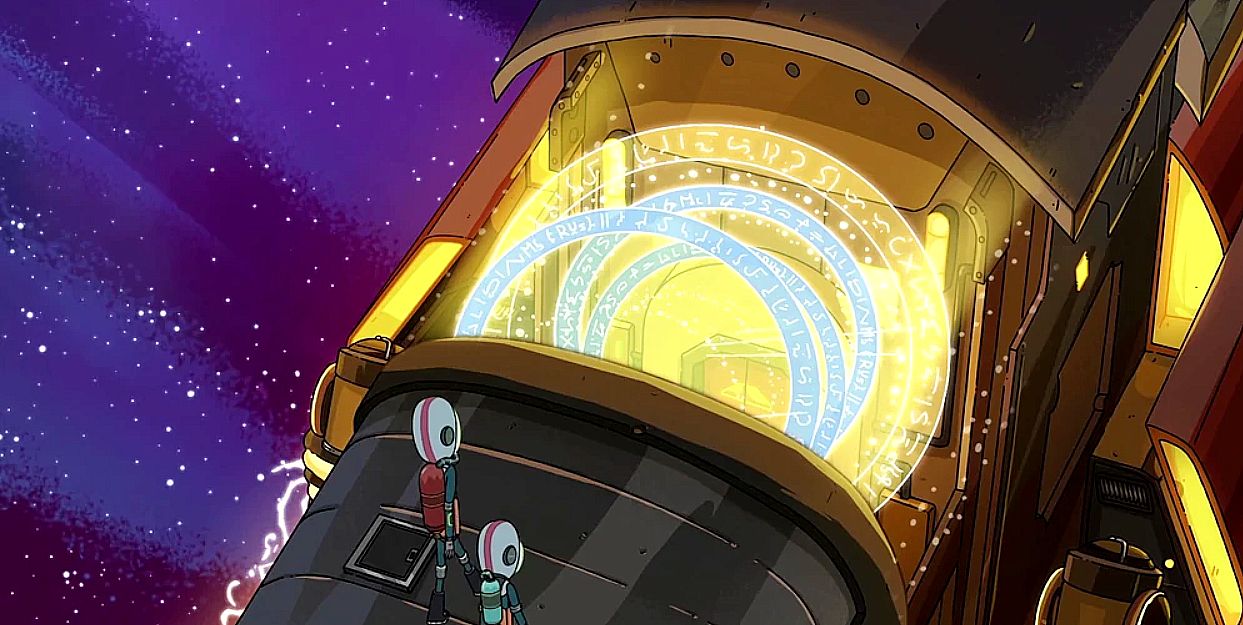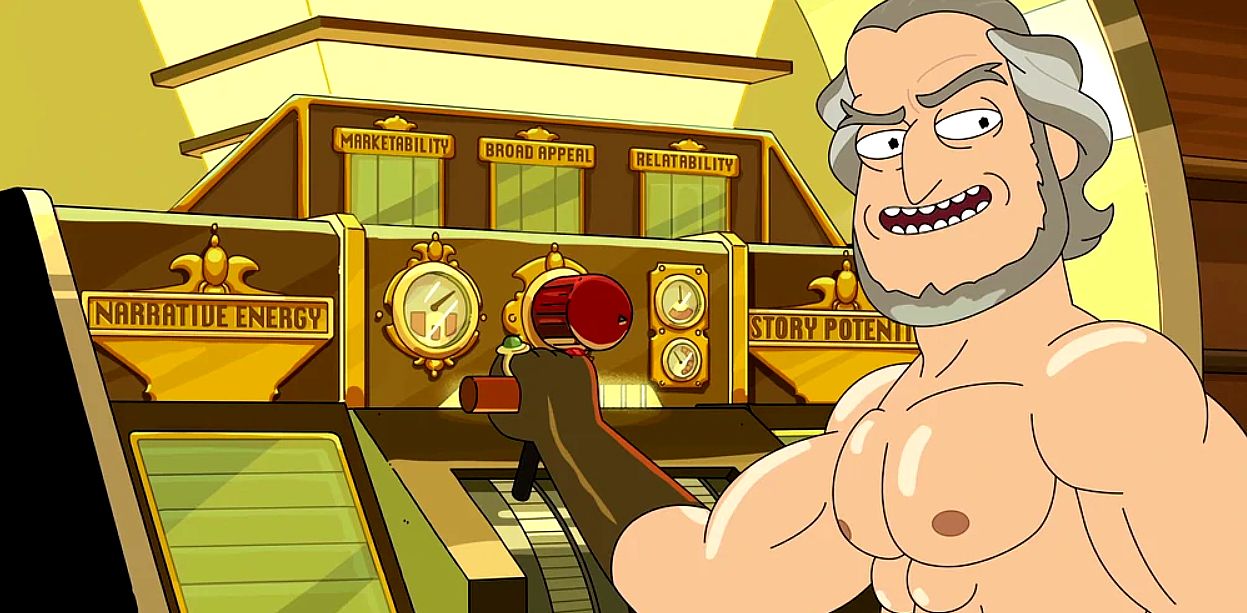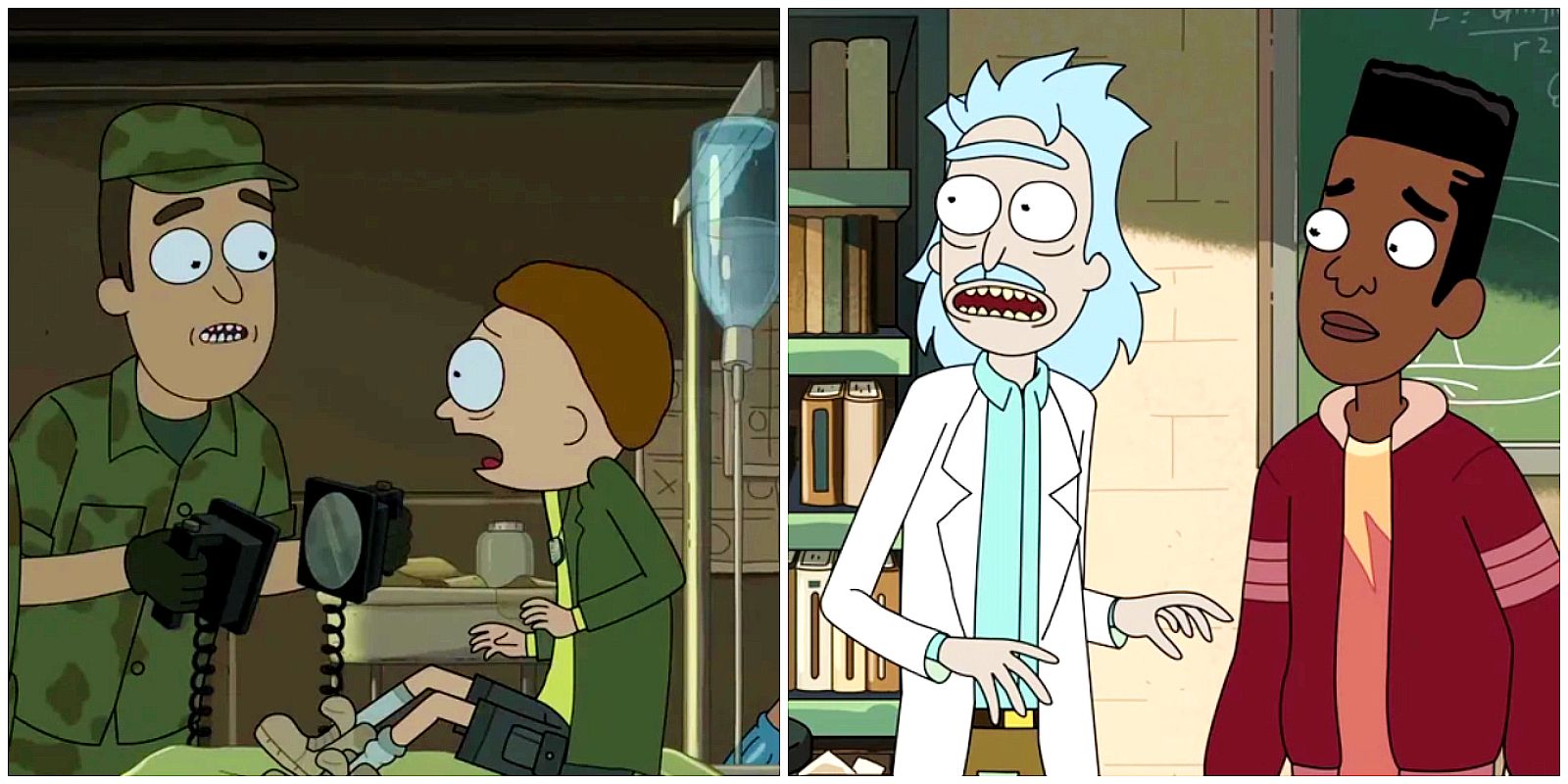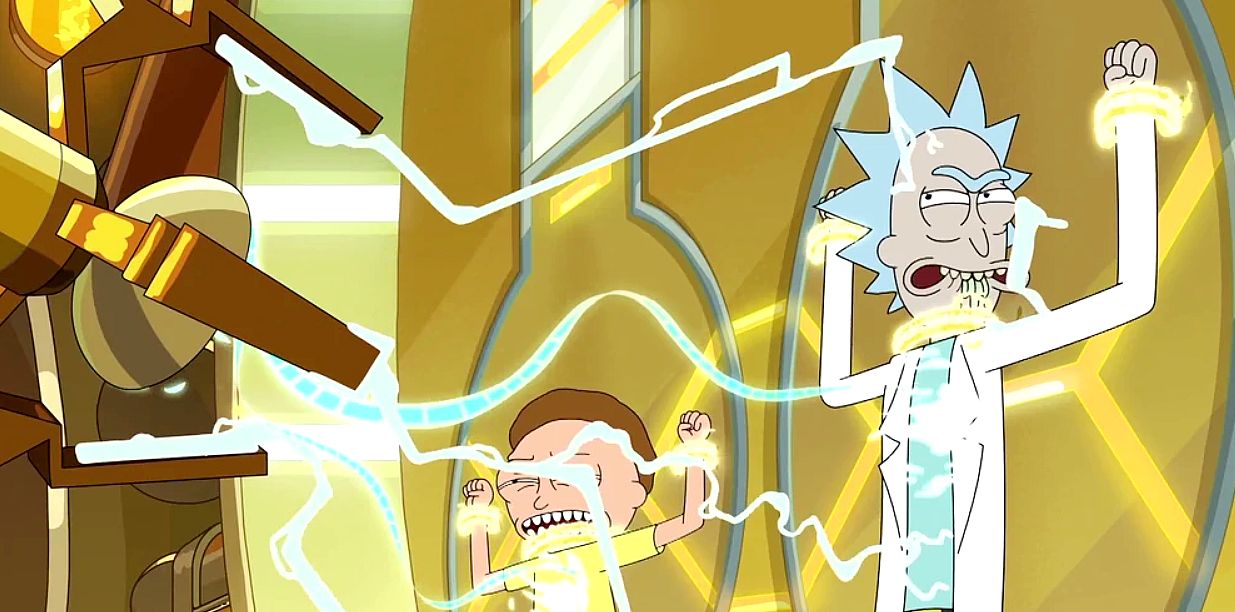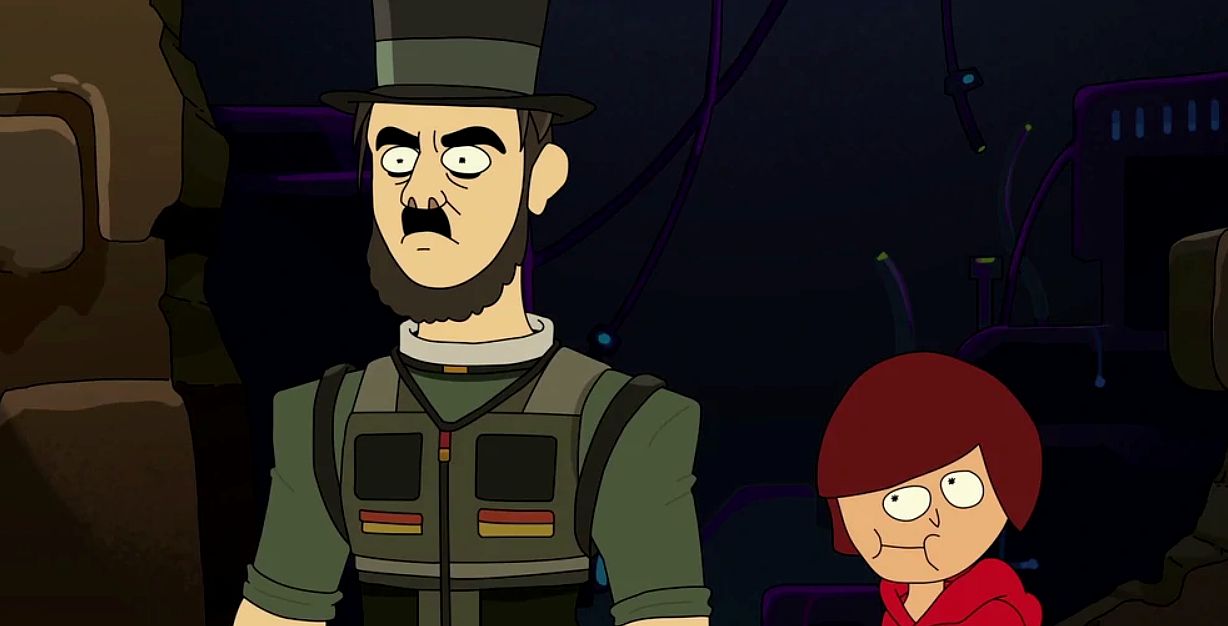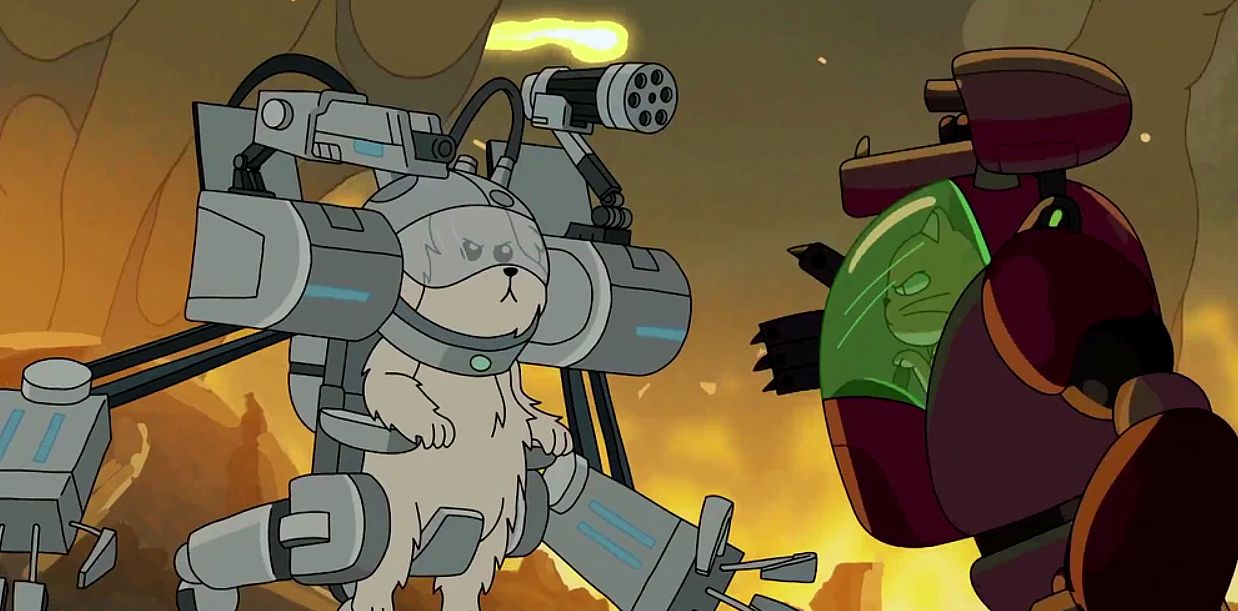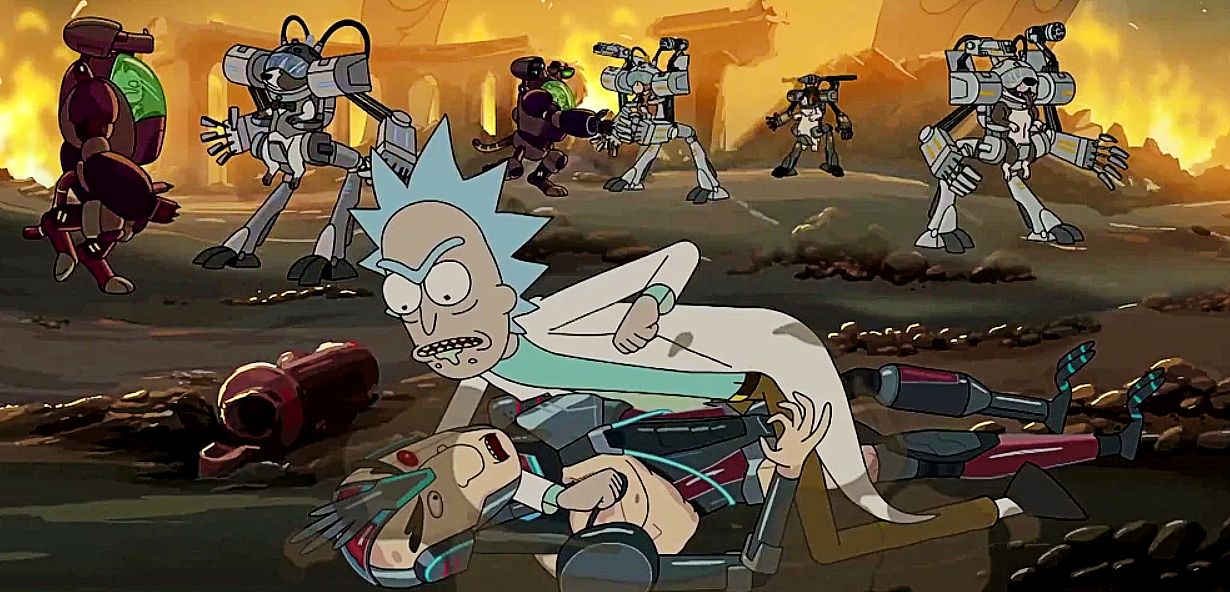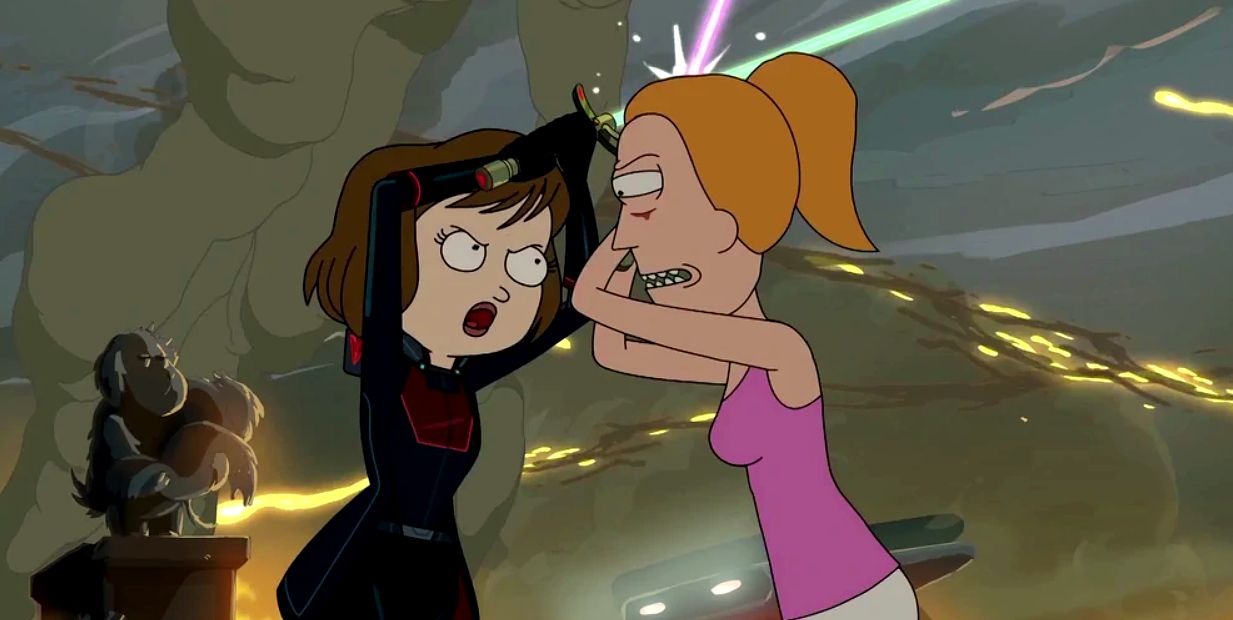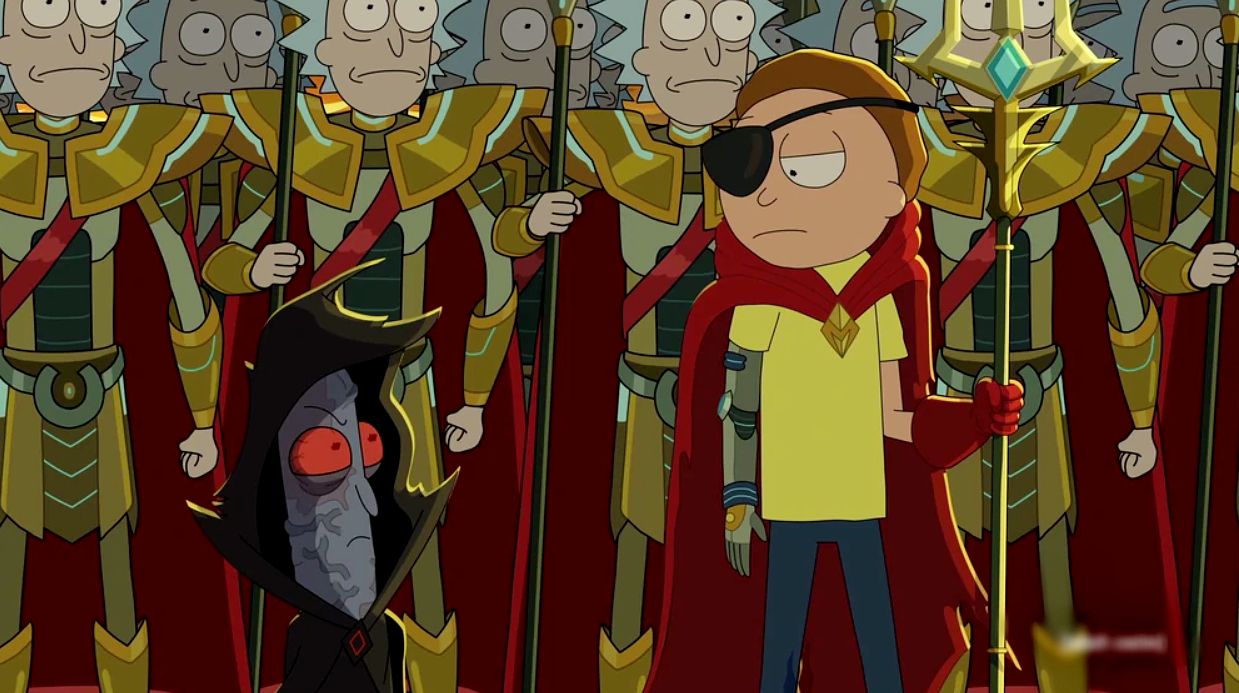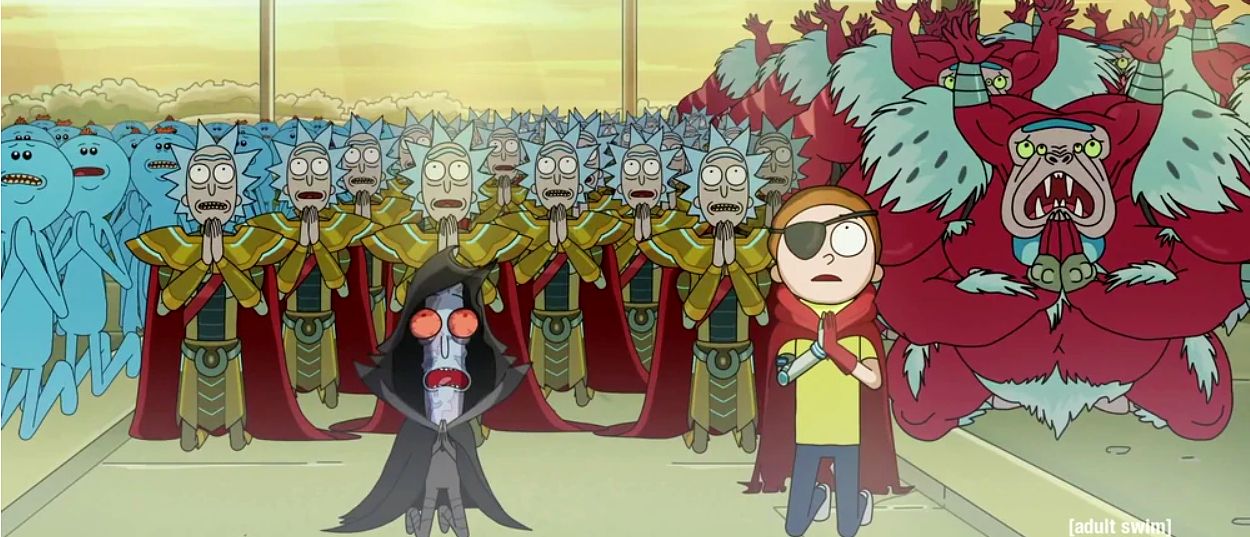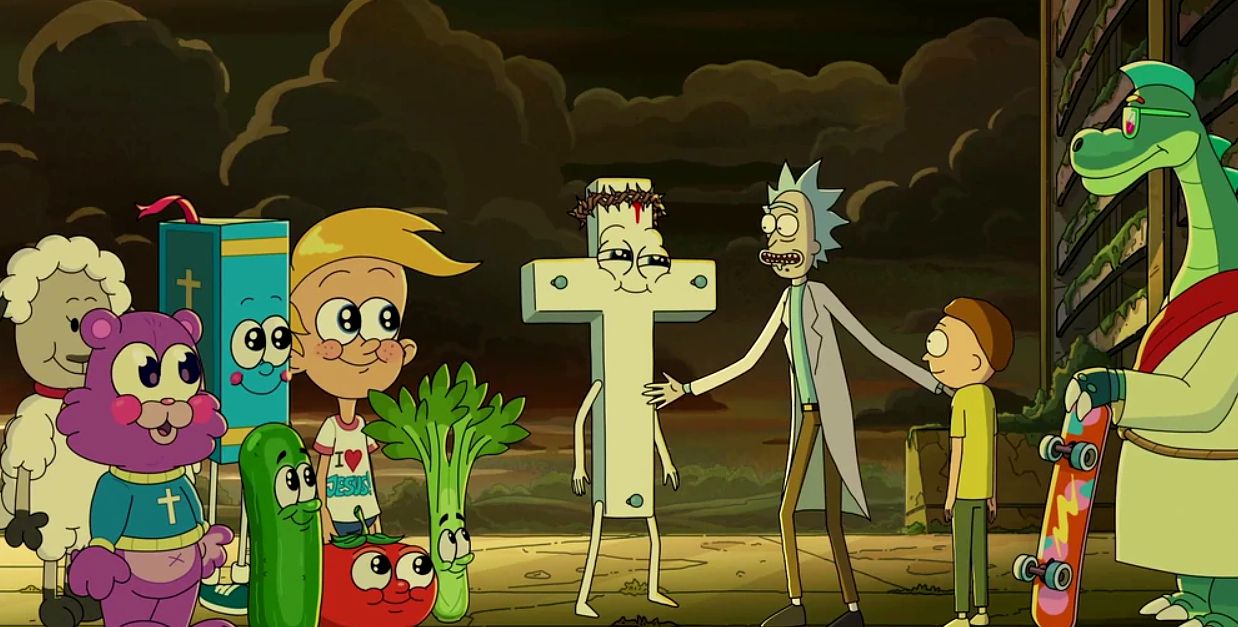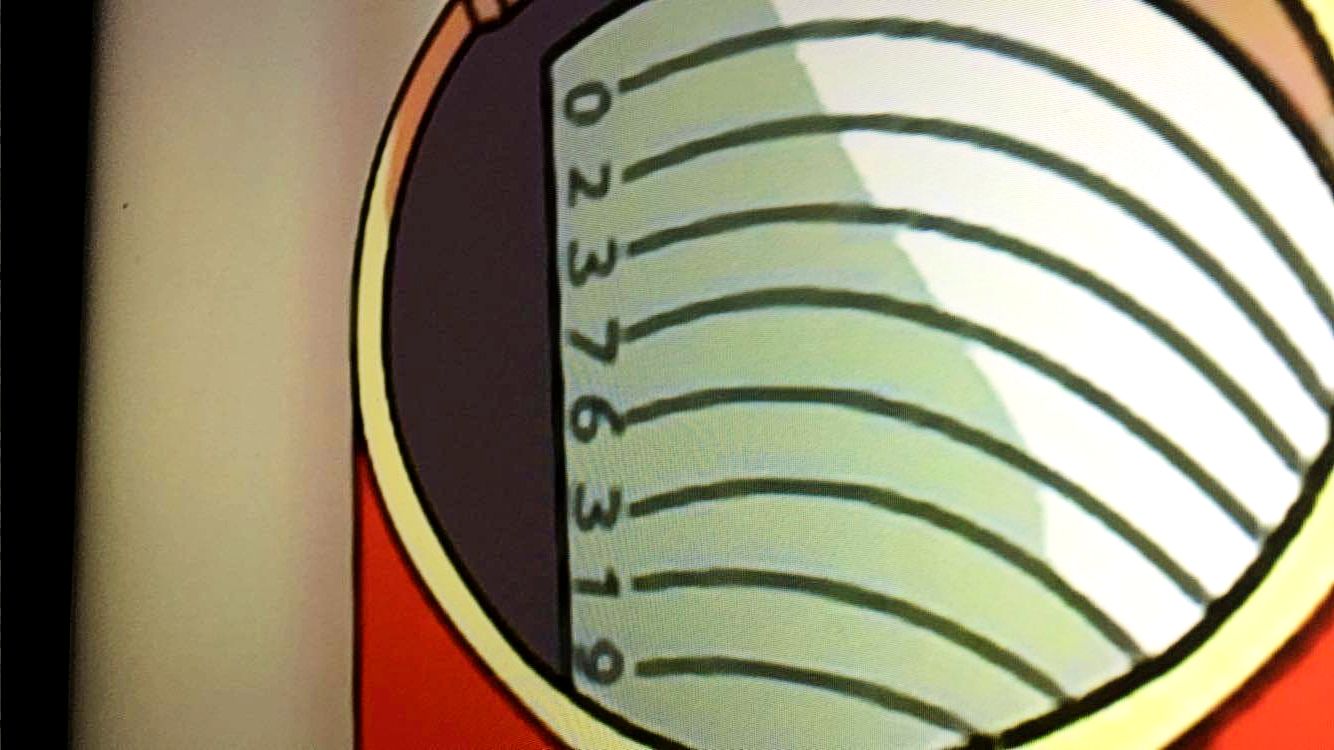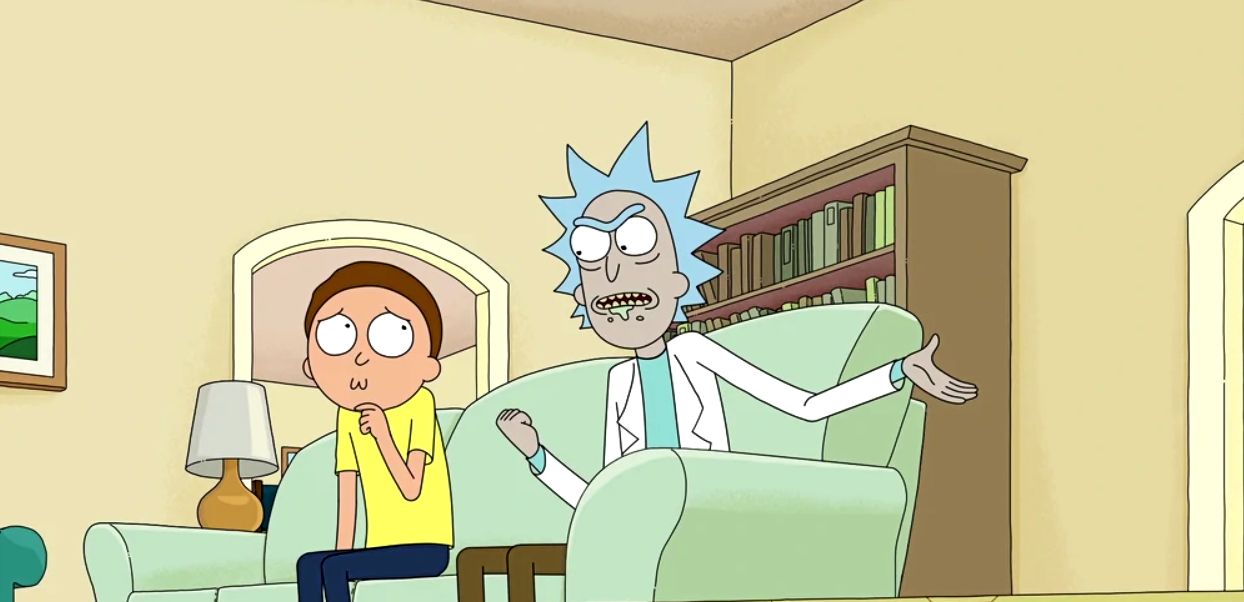Here’s an in-depth run-through of 30+ easter eggs and references in Rick and Morty season 4, episode 6, “Never Ricking Morty”, an episode loaded with more metanarratives than ever before. While not the most consistent in terms of emotional stakes, Season 4 of Rick and Morty is a rip-roaring joy ride, rife with a wacky inventiveness and caustic self-awareness that fans of the show are familiar with and adore.
Warning! Spoilers ahead: Rick and Morty Season 4 Episode 6, "Never Ricking Morty"
“Never Ricking Morty” might have been one of Rick & Morty's most meta-phor laden story structures of the show so far, featuring a literal and figurative Story Train - a homage of sorts to the art of writing. This anthology episode starts with the duo aboard the Story Train, wherein passengers exchange stories about “the man in the white coat” i.e. Rick. Following a ‘continuity explosion’, Rick and Morty embark upon a journey to the engine room, which houses the Story Lord, who intends to exploit their “story potential” via three parameters: marketability, broad appeal, and relativity.
From there on, the episode goes off-the-rails, with flashes of alternative timelines, references to other Rick and Morty episodes, clever easter eggs, and the breaking of the fifth wall. Here are 30+ easter eggs and references in the episode explained.
The Episode’s Title
The title “Never Ricking Morty” is a direct reference to The NeverEnding Story, a 1984 family fantasy film based on the namesake novel by Michael Ende. The NeverEnding Story evokes much of the episode’s themes of layered metanarratives and the conflation of reality and imagination, while the title applies to the Story Train itself, which creates self-sustaining mini-stories while being united by a master storyline. This also alludes to the painstaking, yet thrilling craft of generating never-ending stories in episodic form, especially for a show like Rick and Morty that constantly one-ups itself.
Dan Harmon’s Story Circle
The concept of the Story Train is a metaphorical manifestation of Rick & Morty creator Dan Harmon’s writing process, which is a story circle adapted from Joseph Campbell's Monomyth in Hero With A Thousand Faces. This narrative device traces the transformative adventures of a heroic protagonist, and Harmon’s story circle consists of an eight-step framework that can be applied to any episode, except “Never Ricking Morty.” Rick seems aware of this literary device, utilizing his knowledge of the circle to break the cyclical narrative of the Story Train. The story circle can also be seen as a ship’s wheel on every compartment door, reiterating its significance within the narrative fabric.
‘Venomous’ Beer Taps
In the initial bar scene, the draught beers available on the train’s counter are snake-based, two of which are named ‘Killer IPA’ and ‘Viper’ - a probable reference to the Snake Planet that was featured in season 4, episode 5, "Rattlestar Ricklactica”. On top of this, the Killer IPA beer tap is in the form of a gromflomite, who were a leading species of the Galactic Federation prior to its downfall. It could also be a throwback reference to the gromflomite assassin, Krombopulos Michael, first seen in “Mortynight Run.”
The Ice Queen
In the compartment filled with Rick’s exes appears a character that is reminiscent of the Ice Queen Jadis, the antagonist in C.S. Lewis’ children’s fantasy, The Chronicles of Narnia: The Lion, The Witch, and The Wardrobe. The Ice Queen was played with impressive nuance in the 2005 film adaptation by Tilda Swinton. Smaller references are sprinkled in the banquet scene with the Ice Queen, which appears to consist of Elsa and Anna (Frozen), Aldrich (Dark Souls III), and “the concept of time”, which alludes to the limited time allotted for each episode’s narrative to unfold.
Star Wars/Total Recall
Among Rick’s ex-lovers on the train is what appears to be Yaddle, a Force-sensitive female being from the same species as Grand Master Yoda, who appears as a part of the Jedi High Council in The Phantom Menace. Also, sitting next to her is a three-breasted woman, modeled after a mutant character in the 1990 sci-fi epic, Total Recall. It is also a throwback to the Season 2 episode “Total Rickall.”
Tickets, Please
“Jesus! The tickets please guy is cut!”, exclaims Morty, as the figure in question rips his shirt off to sport his physique. The character is a possible easter egg reference to Indiana Jones: The Last Crusade, in which Harrison Ford impersonates a ticket collector to evade a Gestapo officer. He also represents an obstacle that the duo have to overcome in order to break off narrative continuity, although his only purpose in the narrative is to collect tickets, similar to the Butter Robot in “Something Ricked This Way Comes.”
Interdimensional Cable
This quintessential Rick and Morty plot device is brought up several times throughout Episode 6, which had made its debut in “Rixty Minutes.” While Interdimensional Cable provides access to television shows across different dimensions, the reference to this here makes sense on a meta-level. The fact that this episode comes very close to showcasing disconnected ‘vignettes’ (that Rick also references to) is the joke here, however, it blossoms into something more.
Blips and Chitz
The ticket collector is seen breaching continuity when his body is snapped in half through the window. Once he leaves the narrative structure, he wakes up at Blips and Chitz, an arcade-themed building where in Season 2’s “Mortynight Run”, Morty plays a virtual reality game, living the life of a carpet salesman named Roy up to the age of 55. The circular ring above the arcade machine also says ‘Tickets Please.’
Non-Diegetic Reality
Shortly after the ‘tickets please’ guy wakes up from the game, he disintegrates as he is unsure about the nature of his reality. A shell of a character with no purpose, the tickets please guy is “suspended in disbelief”, which again, is a literary device in speculative fiction, where the audience is willing to forego logic to embrace a fantastical storyline. As Diegetic refers to anything within the bounds of a story, Non-Diegetic reality, at least for the tickets guy, is harrowing and disjointed.
Birdperson’s Musical Number
After the continuity explosion, the fabric of reality becomes malleable and anything can happen. Rick and Morty can pop up in any narrative inside the story train, and this leads to a commercial break, followed by a non-sequitur featuring Birdperson! Rick and Birdperson perform a musical number, a call-back to their friendship in older times.
The Music Room
A cluster of aliens appears next, dressed as popular characters from Broadway musicals such as The Phantom of the Opera, Hairspray, Shrek: The Musical, Cats, and possibly a jester from traditional Shakespearean comedies. Along with this, posters on the wall are references to The Sound of Music, along with moments featuring Rick’s “Get Schwifty” performance and Tiny Rick playing guitar from “Big Trouble in Little Sanchez.”
The Bechdel Test
While on the way to the train’s engine toom, Rick asks Morty to tell a story not involving the duo, a story that is also able to pass the Bechdel Test. This standard for female representation in a fictional setting was proposed by illustrator and cartoonist Alison Bechdel, wherein two named women converse about something other than men. Morty rattles off a story about Beth and Summer, who go on to shoot rainbow lasers at female scorpions out of their vaginas. While Rick and Morty pass the Bechdel test, it is a jab that the fact that this alone is not a yardstick for representing equality in fiction. There’s also a reference to feminist icon Ruth Bader Ginsburg, who Morty refers to as RBG.
Capitalism And Snowpiercer
The train’s engine room is guarded by the thematic seal, which is broken by the two with the aid of the Bechdel test. The engine room symbolizes freedom to assume authority over their own narratives, which is more of a cinematic parallel to Bong Joon-ho’s Snowpiercer. Both narratives are anti-capitalistic in nature, as Rick sarcastically says: “Merchandise Morty, your only purpose in life is to buy & consume merchandise!”
The Story Lord
Then they meet the Story Lord, voiced by Paul Giamatti, Rick describes him as “Matrix Space Frasier” - obviously referencing both The Matrix and the NBC sitcom, Frasier. Story Lord is the symbolic embodiment of the story circle, who straps the duo into a story-extracting mechanism, in which, the probable future and alternate timelines are explored.
Jacob’s Ladder / Back To The Future
There’s a flashback to the Vietnam war in one of Morty’s non-diegetic stories, which is a reference to the possible drug-induced hallucination shown in Jacob’s Ladder. While looking into one of Rick’s non-canon stories, an easter egg is visible that is reminiscent of Back to the Future, where Rick is a wormhole scientist with a teen sidekick.
Beyond The Fifth Wall
Story Lord tortures Rick and Morty as they withe with their arms stretched upwards (a foreshadowing of Christ, who appears later). He threatens to send them “beyond the fifth wall”, which is an extra step into the meta abyss. Rick and Morty advance their character’s forward, and this is when the easter eggs pile up.
Abradolf Lincler And The Party Kid
Abradolf Lincler had sacrificed his life in “Ricksy Business” and the party kid was a background character in an early episode. The duo return in this sequence.
Snuffles
Morty’s dog, Snuffles, who had gained sentience in “Lawnmower Dog”, makes an appearance while fighting an army of cats. The mechs that the cats pilot resemble the Z-Mechs in Plants vs. Zombies: Garden Warfare 2.
Phoenixperson
After Birdperson’s death, he was resurrected by the Federation as Phoenixperson, who appeared in “The Rickshank Rickdemption." He and Rick then engage in a fistfight.
Summer vs Tammy
A lightsaber battle ensues between Summer and her former-friend Tammy, who had turned out to be a deep-cover agent for the Galactic Federation. Summer sports a purple lightsaber, against a backdrop that is reminiscent of Anakin and Obi-Wan’s lightsaber duel on Mustafar in Star Wars: Revenge of the Sith.
Evil Morty, Sith Lord Poopybutthole, and the Army of Ricks
The Citadel of Ricks has been a narrative device that audiences expected to unravel when Evil Morty was first introduced. This is exactly what happens: President Morty is now emboldened with an army of Ricks, who wear cloaks that make them seem like time lords. The otherwise sweet Mr. Poopybutthole also makes an appearance, looking like a Sith Lord from Star Wars.
Gazorpians / Meeseeks and Destroy
Evil Morty’s forces also include the Gazorpians, the alien species introduced in Season 1. The episode also slips in a framed photo of Gazorpazorp, Morty’s alien offspring. On top of this, an entire storyline had been dedicated to the Meeseeks in Season 1, which has quickly become a fan favorite. They seem to have joined Evil Morty in their vengeance against the protagonists.
Bible-Themed Characters
Some of these caricatures are from VeggieTales, which was a 1993 Christian propaganda cartoon, along with Crossy and Biblesaurus, the skateboarding dinosaur. The religious allegory employed here is layered and scrutinizes storylines that are only created to further certain narratives. The appearance of Jesus is a literal Deus ex machina, allowing Rick and Morty to take control of their narratives.
Hidden Code: 0-2-3-7-6-3-1-9
The eight-part story circle mentioned above has been rearranged in the eight-step sequence 02376319 on the train’s engine control panel. This hard-to-spot easter egg was identified through the combined efforts of Rick and Morty fans, especially Redditor u/beastofbalthazar. This sequence serves as a blueprint for the order in which Rick and Morty navigate the train cars.
The Coronavirus
In the end, it is established that the events inside the train do not matter as they are merely a part of a consumer product from the Citadel of Ricks gift shop. When the train is derailed, Rick remarks, “Nobody's out there shopping with this f***ing virus.” Clearly, this is a reference to the real world amid COVID-19 - Rick has broken the fifth wall, joining his audience's present reality.
Episode 6 of Rick and Morty ends with a montage of the story train, which refers to the cyclical nature of consumerism, and the existence of the characters solely on the plane of creation. The website www.story-train.com can be seen, which redirects to Rick and Morty’s official website, and then the screen fades to black.

